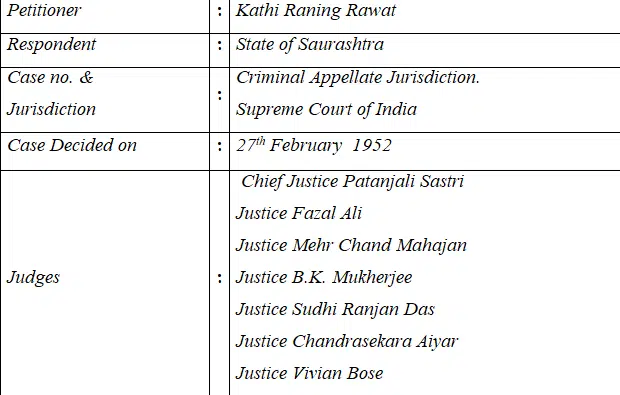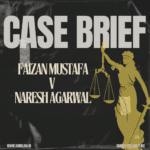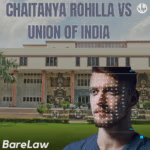Primary Details of the case:

Case Brief on Kathi Raning Rawat v. the State of Saurashtra
Introduction:
In order to understand the provisions on making classification within an enactment, according to article 14 of the Indian constitution, before examining the facts and summary of this case, it is important. The main issue must not be whether or not there was classification but more so if that classification is a positive one i.e. where it is justified in relation to the objects of the act. The basic rule of law as laid down under article 14 says that any such classification based on intelligible differentia which has rational nexus with objective sought to be achieved by enactment is valid one. That means such classification cannot be challenged under article 14 of Constitution of India (CITATION). This was just another ratio which was held in this case and had many differences from what were argued and stated in famous Gupta’s West Bengal Special court case in 1952. The facts are as follows.
Facts of the case:
The facts were that in 1948, State of Saurashtra (now State of Gujarat) passed an ordinance called Saurashtra State Public Safety Measures Ordinance. Under the preambles respectively, it was stipulated that public safety, maintenance of public order and preservation peace and harmony shall be dealt with by the state. It therefore introduced sections 9,10 and also section11 through amendment bill introduced during 1949 which facilitated ability by government to establish special courts through gazette notification. The appointment of judges to such courts have been notified by government in writing including their jurisdictions . These procedures for example were noted otherwise than those provided for in CrPC etc. Henceforth appellant challenged said ordinance as well as jurisdiction exercised by special court constituted therein under same ordinance mainly on grounds that it is discriminatory being violative under Article 14 read with Part III (Fundamental Rights) Constitution Of India In addition ,the issues raised in this case are.
Issue(s) framed:
The Supreme Court framed following issue,
The main question in this appeal was whether the amendment to the original ordinance of 1948 violated Article 13(1) of the Indian Constitution as it is in violative article 14 under part 3 of the Indian constitution.
Laws applied:
Article 13(1) – throws light on validity of pre-constitutional laws which are against part 3 of the Indian constitution
Article 14 – guarantees to equality
Section no.9,10 and 11 of Saurashtra State Public Safety Measures (amendment) ordinance ,1948
Contentions:
The appellant contended two things in this case. The first argument was that the conferment of special powers to the state government under section 11 of the ordinance is a discrimination per se as it discriminates between common people who have committed such an offense and the appellant who has also committed the same offense. They have been shaped by some cases and acts which happened to be different from that of petitioners’ procedure, therefore, being discriminatory and against article 14 of Indian constitution. The second argument was based on holding that vesting power on legislature under section 5 of the ordinance is ultra vires because this delegation went beyond what can be done by legislature. It is thus argued that this section should be declared void.
On the other hand, Saurashtra State denied all these contentions by stating explicitly that there was no discrimination with regard to Appellant’s case here. According to it, establishing various courts for two-fold classification ensures disposal of such matters expeditiously unlike normal courts.
Decision:
Now let us look at different approaches by seven judges who decided this with a ratio of 4:3
Firstly Chief Justice Patanjali Sastri held not all legislations must discriminate nor when the ground for filing the case is discrimination then one has to examine relevant points in article 14 to hold if this classification is reasonable or not. He said though there were different procedures that were applicable in favor of this particular case; however, is there any nexus between these laws and objectives? In fact, application of procedures and laws differed in this matter though it didn’t reach a point where substantial disparity like unfairness could have been found out hence there wasn’t any refusal for justice. Consequently, he pronounced his judgement which stated that ordinance was valid.
Justice Fazal Ali agreed with his Chief justice but set forth a separate ground saying while some may legally classify within reason others may do so without reason . For him, the present case was an example of reasonable classification under Article 14 and hence I upheld it.
Justice Mukherjea maintained that there is no nexus between the notification and the objective sought to be achieved through it. Thus he felt that there should not be any hard and fast rules as to classification.
Justice Das held section 11 of the notification did not confer uncontrolled power on the state government; instead, it allowed such power to permit a reasonable classification between ordinance’s goal and notification. As a result, he declared his judgement which stated that ordinance was valid
Lastly, it is important to note that Justice Mahajan dissented basing his observation on the fact that there was no reasonable classification neither in the preamble of the notification nor in the original ordinance in 1948. As a result, whatever differentiations are made by state governments goes much beyond its powers: and such differentiation would be ultra vires.
Conclusion:
One of the most significant aspects pinned in this case was that a reference was made by constitutional bench to previous decision pronounced by it while deciding West Bengal Special courts case which also suffered from like trouble. The court identified one major difference between this case and the previous relevant precedents which held that no nexus established as seen here existed in any other judgment passed before relating to West Bengal special courts act. This case classified offenses and appropriately dealt with nexus contrary to West Bengal special courts act instance.



